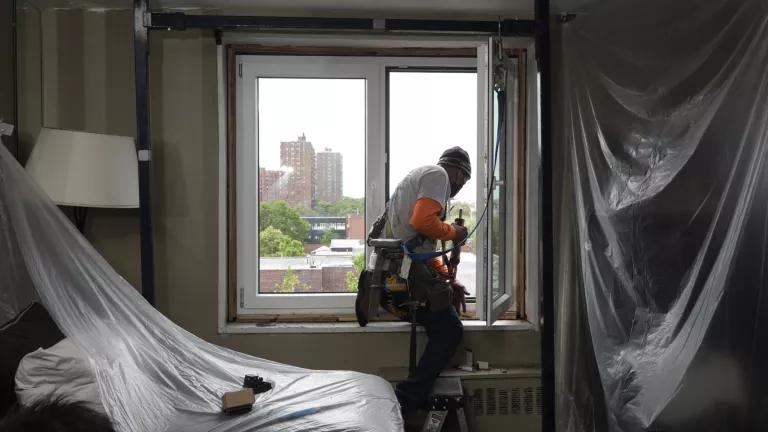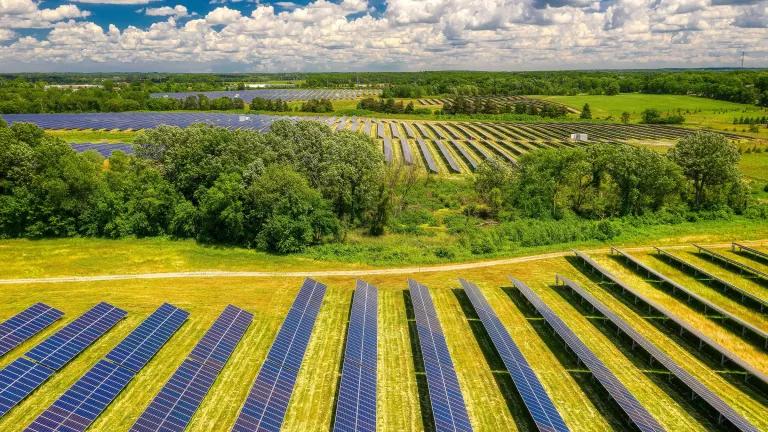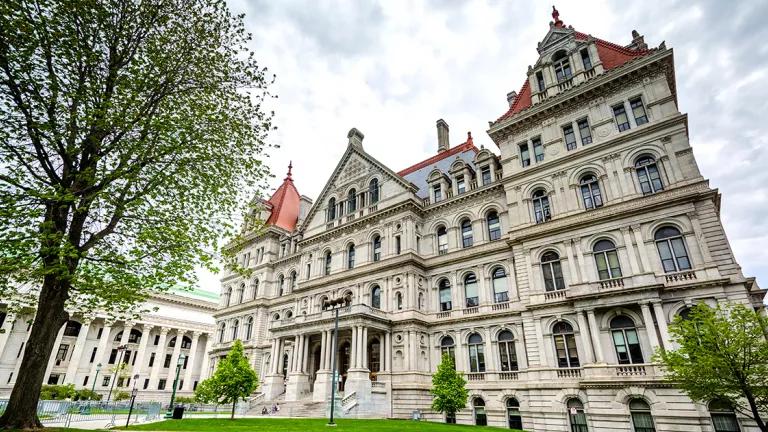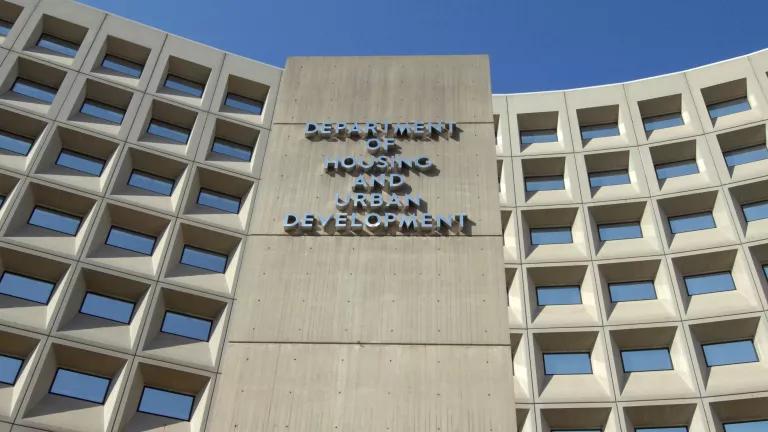Time for the Senate to Pass the Build Back Better Act
Successful nations don’t waste money propping up antiquated industries. We invest, instead, in a more promising future.

A worker for the Association for Energy Affordability installing new windows. The Build Back Better Act would boost investment in home weatherization projects like this one and help cut consumers’ energy bills. | Natalie Keyssar for NRDC
After years of failing to respond to rising seas, withering drought, and raging wildfires, storms, and floods, the nation is poised at last for historic climate action, as a divided Senate takes up the Build Back Better Act.
Approved in the House last month, the bill calls for a record $550 billion in national investment, over 10 years, to speed the shift away from the fossil fuels that are driving the climate crisis and toward cleaner, smarter ways to power our future.
To put that in perspective, U.S. health care costs from climate change and fossil fuel pollution already top $820 billion a year. And taxpayers are on track to shell out $200 billion over the coming decade in state and federal subsidies for oil, gas, and coal.
Successful nations don’t waste money propping up industries of the past that do more harm than good. We invest, instead, in a more promising future.
That’s why the Senate should pass the Build Back Better Act without delay.
If enacted, the bill will provide powerful tax incentives to speed the shift to wind and solar power. It will make electric cars—new and used—more affordable for middle-class and lower-income families. And it will boost investment in efficiency that will save households $500 a year, on average, in energy costs.
The bill begins by focusing national resources on cleaning up the power plants and motor vehicles that together account for about two-thirds of the nation’s carbon footprint.
One of the cheapest and most effective ways to cut carbon pollution is to replace coal-fired electricity generation with clean, renewable power from the wind and sun, while modernizing our transmission grid and storage systems.
The Build Back Better Act, if enacted, will provide powerful clean energy incentives to do just that for power companies, as well as nonprofits, rural electricity cooperatives, and low-income families.
Tax credits in the bill can cut the cost of installing rooftop solar panels, for instance, by about 30 percent. And there are bonus incentives to make sure applicable benefits flow to those that need help the most, including low-income communities on the frontlines of climate hazard and harm, and regions that have lost power plants, mines, or other fossil fuel facilities.
The growth of wind and solar power, up fourfold over just the past decade, is one reason that clean energy is the biggest job creator across the energy sector. Clean energy employs more than 3 million Americans—nearly three times as many as fossil fuels do—at jobs that pay, on average, 25 percent more than the median wage, according to U.S. Bureau of Labor Statistics data.
The Build Back Better Act will accelerate the shift to clean energy, speeding the growth of high-quality jobs.
The bill, if enacted, will make electric cars and light trucks more affordable for all Americans. Buyers would be eligible for a $7,500 tax credit—even more for vehicles built in this country by union workers—and it could be applied directly to the price of a new car. The credits wouldn’t be available to wealthy individuals or for expensive luxury cars. There’s a separate credit for used cars: Buyers with annual household income below $75,000 would be eligible for a direct tax credit of up to $4,000 on any used electric car, van, or pickup truck costing $25,000 or less.
The bill also upgrades tax credits for businesses that buy electric vehicles for commercial purposes. It provides investments to help the U.S. Postal Service and other federal agencies shift to electric vehicles. And it complements new federal tailpipe emissions standards, already proposed, to help speed the industry toward 100 percent pollution-free car sales by 2035.
The Build Back Better Act would also boost investment to help weatherize homes and put energy-efficient appliances within reach for low-income and middle-class families, cutting consumers’ energy bills.
The science is clear: We’ve got to cut carbon pollution and other greenhouse gases by at least half, in this decade, to avert the worst consequences of climate change. The Build Back Better Act is the centerpiece of a broader national strategy to cut greenhouse gases by 50 percent to 52 percent by 2030.
Getting there will also require ambitious new carbon pollution and health standards at the local, state, and national levels. It means making every agency of the federal government part of the climate fix, and not part of the problem. And it means continued progress through public research and the private sector to drive innovation and change.
The Build Back Better Act is tailored to promote those needed gains. If enacted, it will provide the strategic investment we need to confront the climate crisis, generate jobs, strengthen the economy, and create a more equitable society. Those are the kinds of big picture goals we elect our leaders to achieve.
It’s time for the Senate to stand up for the interests and values we share. It’s time to pass the Build Back Better Act.



